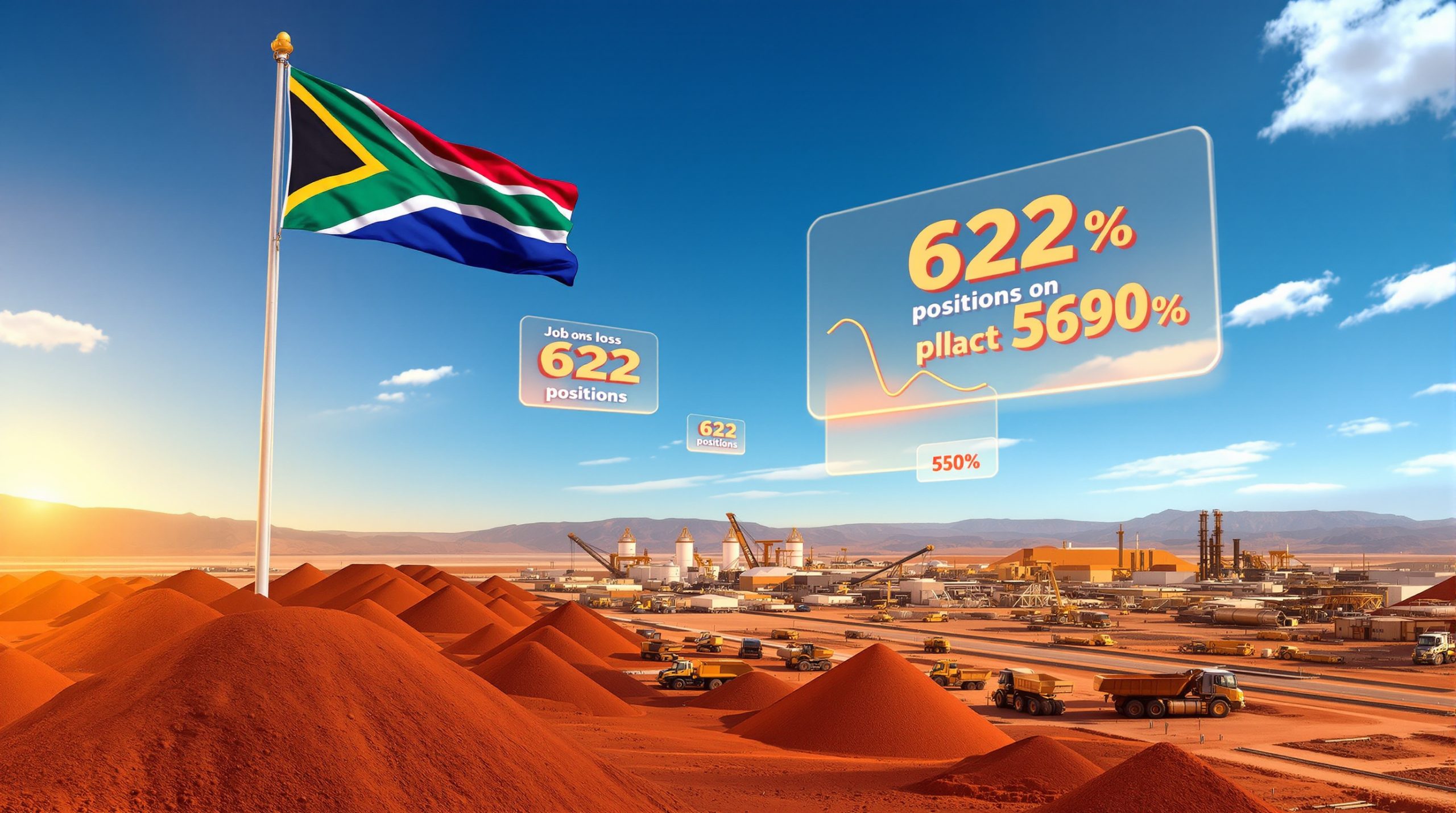Why Is the BHP Share Price Outperforming the ASX Today?
BHP's share price is demonstrating remarkable strength today, surging 4.2% to $38.76 while the broader ASX 200 index has fallen 0.2%. This impressive performance isn't occurring in isolation, as other major mining stocks like Rio Tinto (up 1.9% to $110.40) and Fortescue (up 1.1% to $16.14) are also outperforming the benchmark, though not as dramatically as BHP.
The Australian rally follows an identical 4.2% increase for BHP shares on international markets overnight, signaling strong global sentiment toward the mining giant. This cross-exchange momentum reflects the advantage of BHP's listings on multiple global exchanges, including the New York Stock Exchange and London Stock Exchange, providing broader investor access and potentially more stable trading patterns during positive market movements.
What's Driving BHP's Share Price Movement?
The primary catalyst behind why is the bhp share price smashing the benchmark today appears to be a combination of rising commodity prices and positive policy signals from China. The mining sector as a whole is outperforming the broader market, with BHP leading the charge due to its diverse commodity exposure and global market position.
According to market analysts, this sudden surge reflects shifting investor sentiment toward resource stocks amid renewed optimism about China's industrial outlook. The synchronized rally across global exchanges – with BHP shares up 4.2% on both the NYSE overnight and the ASX today – demonstrates the power of international investor flows when positive catalysts emerge.
Investment strategists note that BHP's superior liquidity across multiple international exchanges makes it particularly responsive to global sentiment shifts, often serving as the "first mover" when commodity market dynamics improve. This multi-exchange advantage helps explain why BHP is outperforming even its closest mining peers today.
How Are Iron Ore Prices Influencing BHP's Performance?
The Critical Iron Ore Connection
Iron ore remains BHP's primary revenue generator, accounting for a substantial 56% of the company's underlying EBITDA in the six months to December 31. During this period, BHP produced an impressive 131 million tonnes of iron ore, generating US$7.2 billion in underlying EBITDA – highlighting the company's significant exposure to iron ore price trends.
After trending downward since February (falling from approximately US$107 per tonne to just over US$93 per tonne by July 1), iron ore prices jumped 2.5% overnight to US$95.55 per tonne. This sudden reversal has provided immediate support to BHP's share price, given the company's outsized exposure to iron ore markets.
Industry experts emphasize that BHP's production scale gives it significant operating leverage to iron ore price movements. With a production cost profile among the lowest in the industry, even small price increases can translate to substantial margin improvements across BHP's vast iron ore operations.
China's Policy Shift Boosting Iron Ore Sentiment
The catalyst for this iron ore price increase appears to be recent announcements from the Chinese government regarding industrial capacity and competition policies. According to market analysis from ANZ Group, Chinese authorities have signaled plans to:
- Decrease certain industrial capacity
- Target cheaper unorganized competition in the steel sector
As ANZ analysts explained in their note (as quoted by the Australian Financial Review): "The move shows China's leaders are trying to tackle deflationary pressures weighing on the economy. The plans should also bring some relief to the steel industry, which has been weighed down by overcapacity."
These policy adjustments represent China's efforts to address deflationary pressures affecting its economy while providing relief to its steel industry, which has been struggling with overcapacity issues. As China consumes approximately 70% of global seaborne iron ore, any policy changes affecting its steel sector have immediate implications for major iron ore producers like BHP.
Mining industry specialists note that China's approach to managing steel production has evolved significantly in recent years, with increasing focus on consolidation, environmental standards, and production efficiency rather than simply targeting volume growth. This nuanced approach to industrial policy can create volatility in iron ore markets but potentially benefits premium producers like BHP who supply higher-grade iron ore that supports more efficient, less polluting steel production.
What Other Factors Are Supporting BHP's Share Price?
Copper Price Strength Adding Momentum
While iron ore dominates BHP's revenue stream, copper represents the company's second-largest revenue source. Overnight, copper prices increased by 0.8% to US$10,013 per tonne, continuing a positive trend that has seen prices rise 4.1% since early June (from US$9,617 per tonne).
This copper price strength provides significant additional support for BHP's share price. The company's substantial copper exposure – primarily through its flagship Escondida mine in Chile (the world's largest copper mine) and Olympic Dam in Australia – creates a diversification advantage over more iron ore-dependent competitors. Recent copper price insights suggest this trend could continue supporting BHP's performance.
Commodity market specialists highlight that copper's fundamentals differ substantially from iron ore, with supply constraints and growing demand from energy transition applications supporting prices. BHP's strategic positioning in both commodities gives investors exposure to both the traditional Chinese infrastructure story (via iron ore) and the global electrification trend (via copper).
Multi-Exchange Listing Advantage
BHP's listing on multiple international exchanges provides several strategic advantages that contribute to its share price performance:
- 24-hour trading capability: Price discovery continues across time zones
- Broader investor access: Attracts global institutional capital flows
- Increased market liquidity: Tighter bid-ask spreads and more efficient price formation
- Enhanced price stability: Deeper order books can absorb larger transactions
This international market presence may contribute to stronger price momentum when positive sentiment emerges across global markets, as institutional investors can build positions across multiple exchanges.
Market liquidity insight: BHP's multi-exchange listing makes it the most liquid mining stock globally by total trading volume, allowing institutional investors to build or reduce substantial positions without significant market impact – a critical consideration for large asset managers implementing sector rotation strategies.
How Does BHP's Performance Compare to Other ASX Mining Stocks?
Relative Performance of Major Miners
While all three major ASX-listed iron ore producers are outperforming the benchmark today, BHP's 4.2% gain significantly exceeds both Rio Tinto's 1.9% increase and Fortescue's 1.1% rise. This performance gap highlights important structural differences between these mining giants:
| Company | Today's Gain | Iron Ore Dependency | Other Key Commodities | Market Liquidity |
|---|---|---|---|---|
| BHP | +4.2% | 56% of EBITDA | Copper, Coal, Nickel | Highest (multi-exchange) |
| Rio Tinto | +1.9% | ~80% of EBITDA | Aluminum, Copper | Medium-High |
| Fortescue | +1.1% | ~95% of EBITDA | Emerging green hydrogen | Medium |
This outperformance suggests investors may be particularly attracted to BHP's:
- Broader commodity diversification
- Larger market capitalization
- Greater liquidity across international exchanges
- Balanced exposure to both traditional and future-focused commodities
The varying degrees of share price movement among these miners likely reflects their different exposure levels to iron ore and other commodities, as well as company-specific factors affecting investor sentiment.
Mining analysts note that BHP's superior performance during commodity price upswings often reflects its operational diversity. While pure-play producers like Fortescue may offer greater leverage to iron ore specifically, BHP's balanced portfolio provides exposure to multiple commodity cycles simultaneously, attracting investors seeking broader resources exposure.
What Are the Implications for Investors?
Short-Term Considerations
The immediate price action in BHP shares reflects market optimism about China's policy adjustments and their potential positive impact on surging iron ore demand. Investors should monitor:
-
Further Chinese policy announcements affecting industrial metals
- Steel production quotas and capacity reduction targets
- Environmental compliance standards for steel mills
- Infrastructure stimulus measures
-
Iron ore inventory levels at Chinese ports
- Current levels relative to 5-year averages
- Rate of drawdown or accumulation
- Quality spreads between different ore grades
-
Steel production figures from major Chinese producers
- Month-on-month production trends
- Capacity utilization rates
- Profit margins at steel mills
These indicators will help determine whether today's rally represents a temporary bounce or the beginning of a more sustained recovery in iron ore prices and mining stocks.
Resource investment specialists emphasize that short-term price movements in commodity stocks often reflect sentiment shifts rather than fundamental changes in supply-demand dynamics. However, policy signals from China deserve particular attention given their outsized influence on industrial metal markets.
Longer-Term Outlook
For longer-term investors, BHP's performance today highlights the company's continued sensitivity to:
-
Chinese economic policies
- The long-term shift from investment-led to consumption-led growth
- Environmental policies affecting industrial production
- Urbanization trends and housing market dynamics
-
Global industrial metal price cycles
- Supply responses to current high prices
- Development timelines for new mining projects
- Technology-driven changes in metal intensity of global GDP
-
Supply-demand dynamics in key commodity markets
- Structural changes in steel demand (peak steel debates)
- Growing copper demand from energy transition
- Production constraints from declining ore grades globally
While today's price action is positive, investors should consider BHP's performance within the context of broader commodity cycles and the company's strategic positioning across its diverse portfolio of assets. For a broader perspective, analyzing recent share market performance insights can provide valuable context.
Investment perspective: "The most successful commodity investors distinguish between cyclical price movements and structural changes in supply-demand fundamentals. BHP's diversified portfolio provides some buffer against individual commodity volatility, but ultimately remains leveraged to global economic growth and industrial production trends."
FAQs About BHP's Share Price Performance
How significant is iron ore to BHP's overall business?
Iron ore represents BHP's largest revenue stream, accounting for 56% of the company's underlying EBITDA in the most recent half-year reporting period. This makes BHP highly sensitive to iron ore price movements, though less dependent on a single commodity than some competitors like Fortescue. BHP's Western Australian iron ore operations are considered among the lowest-cost, highest-margin assets in the global mining industry.
What impact do Chinese economic policies have on BHP?
As China consumes approximately 70% of global seaborne iron ore, Chinese economic and industrial policies have a direct impact on demand for BHP's primary product. Policy changes affecting steel production, construction activity, or industrial output can significantly influence BHP's financial performance.
The relationship is complex and evolving, as China balances environmental goals, economic growth targets, and industrial modernization priorities. BHP's management closely monitors Chinese policy developments as a key indicator for future demand trends.
How does BHP's diversification compare to other major miners?
BHP maintains a more diversified commodity portfolio than pure-play iron ore producers like Fortescue. In addition to iron ore, BHP has significant exposure to copper, coal, nickel, and petroleum products, providing some buffer against volatility in any single commodity market.
This diversification strategy has evolved over time, with BHP divesting certain assets (like its South32 spinoff) to focus on what it considers "future-facing" commodities with stronger long-term demand prospects. The company's exposure to both traditional industrial metals and energy transition materials distinguishes it from more narrowly focused competitors.
What factors might reverse today's positive share price movement?
Potential headwinds that could reverse today's gains include:
-
Disappointing Chinese economic data
- Weaker-than-expected PMI readings
- Declining property sector metrics
- Reduced credit growth figures
-
Renewed concerns about global recession
- Central bank policy tightening beyond expectations
- Rising bond yields impacting growth forecasts
- Deteriorating manufacturing indices in major economies
-
Unexpected increases in iron ore supply
- Faster-than-anticipated production ramps from major projects
- Reduced shipping disruptions
- Improved Brazilian export recovery
-
Company-specific operational challenges
- Production disruptions at key assets
- Regulatory hurdles in operating jurisdictions
- Cost inflation exceeding management expectations
What's Next for BHP?
Today's strong performance in BHP's share price demonstrates the mining giant's continued sensitivity to iron ore prices and Chinese economic policies. While the immediate catalyst appears to be China's industrial capacity adjustments, the sustainability of this rally will depend on whether these policy changes translate into actual increased demand for steel-making materials.
For investors, BHP's outperformance relative to both the broader market and its mining peers highlights the company's strong market position and investor confidence in its diversified business model. However, as with all commodity-focused businesses, future performance will remain closely tied to global economic conditions and industrial metal price cycles.
The company's strategic focus on what it terms "future-facing commodities" – particularly copper and nickel for energy transition applications – positions it to potentially benefit from both traditional infrastructure-driven demand and emerging clean energy trends. This balanced exposure to both current and future demand drivers represents a key part of BHP's investment case and creates interesting investment opportunities for those looking at the resources sector.
Disclaimer: Commodity markets are inherently volatile and subject to rapid price swings based on multiple factors including policy changes, supply disruptions, and macroeconomic trends. Investors should consider their risk tolerance and investment horizon before making decisions based on short-term price movements.
Ready to Invest in the Next Mineral Discovery Opportunity?
Don't miss out on potential market-beating returns from significant ASX mineral discoveries. Explore Discovery Alert's dedicated discoveries page to understand how early identification of major discoveries can lead to substantial investment returns, powered by our proprietary Discovery IQ model: https://discoveryalert.com.au/discoveries/




